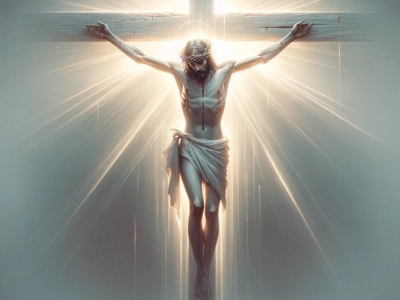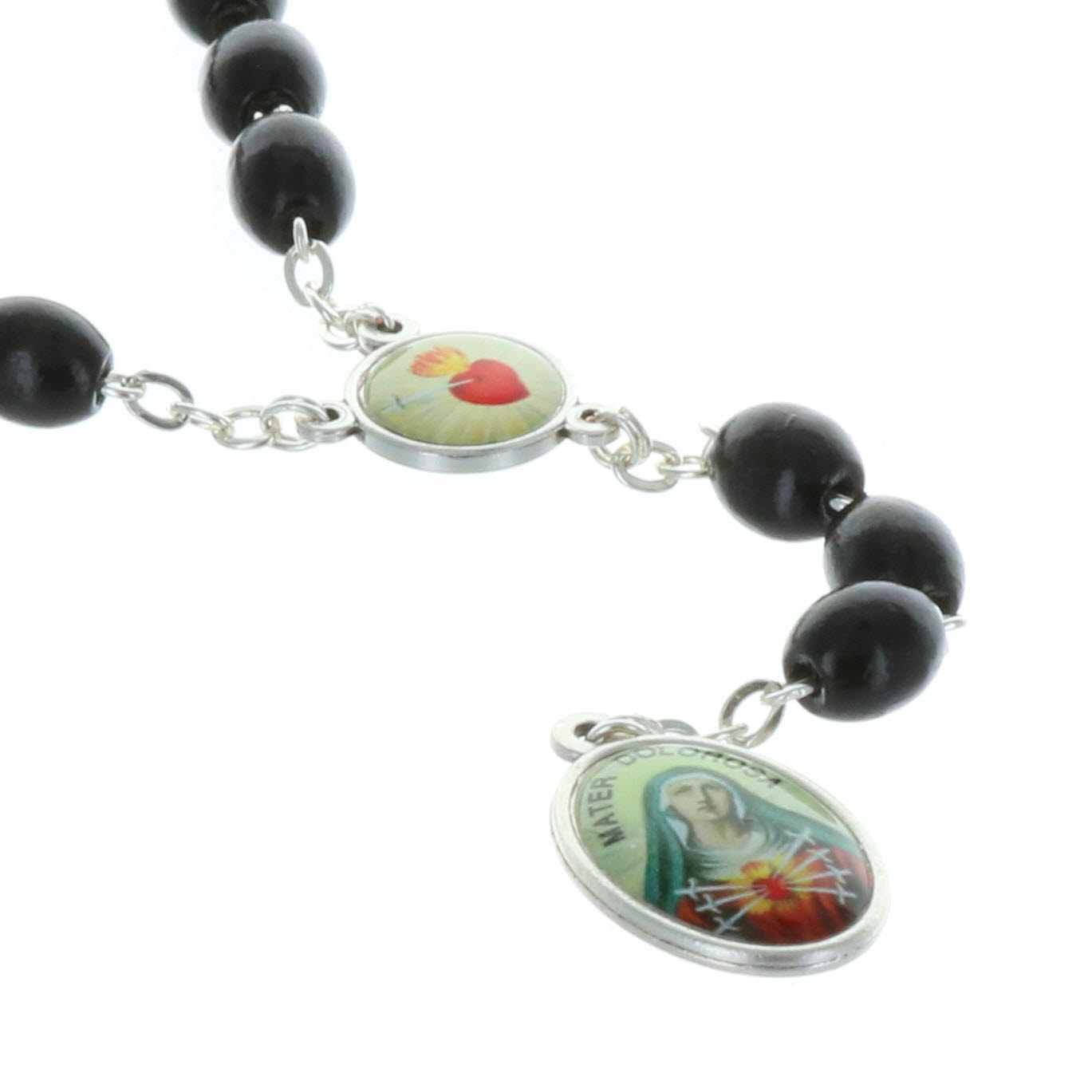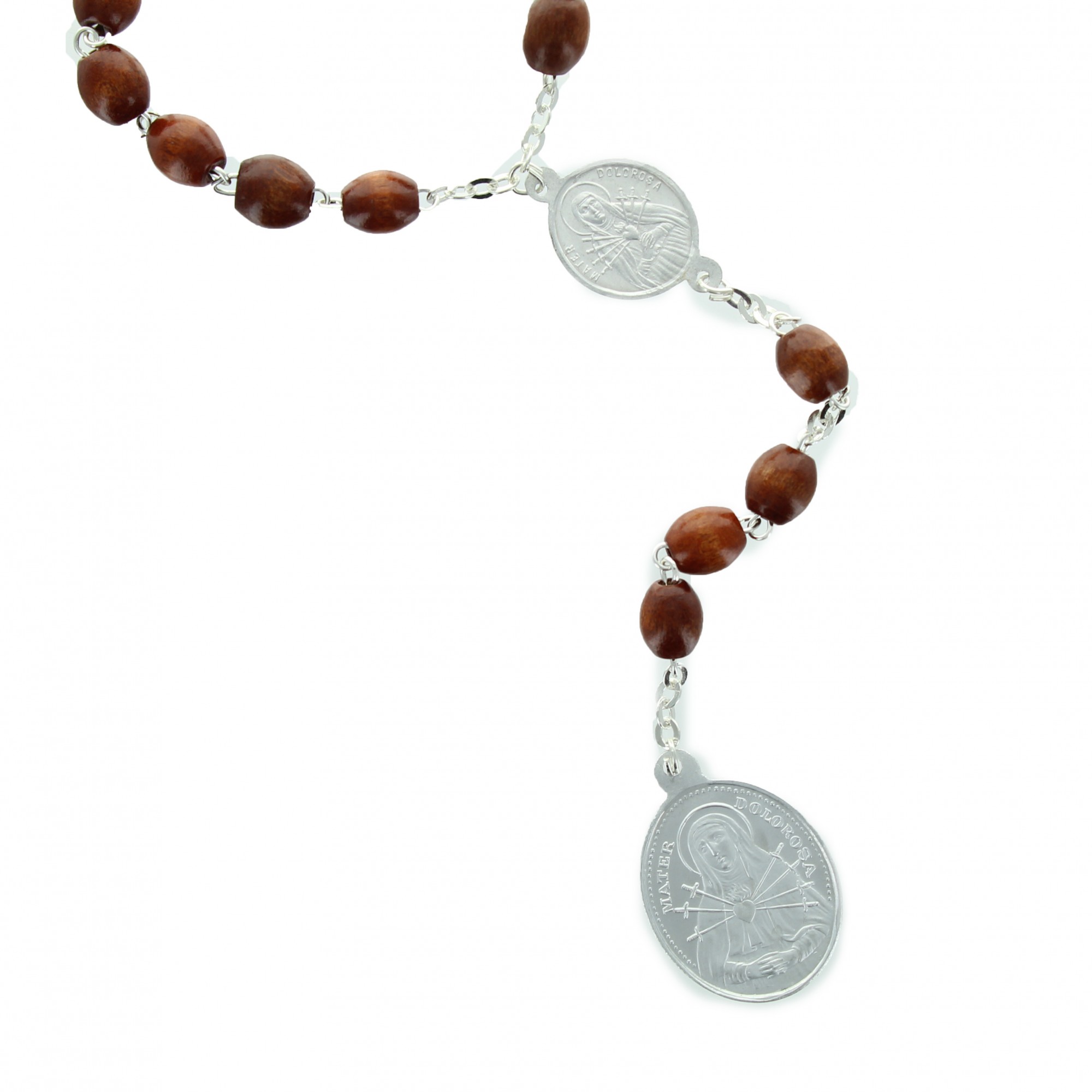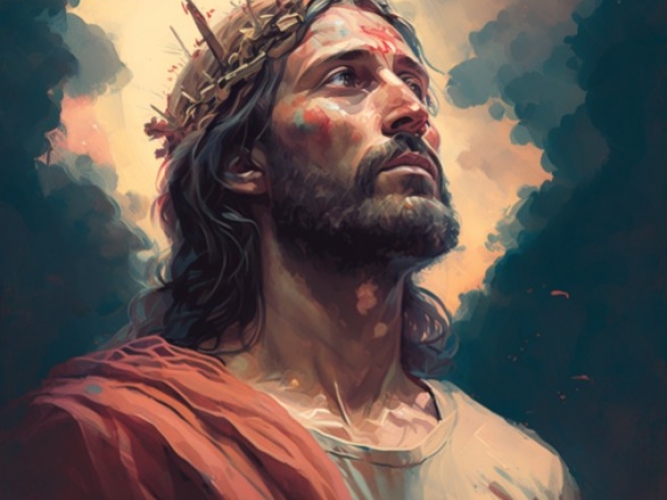The crucifixion of Jesus Christ represents one of the most poignant and significant moments in Christian tradition. At the heart of this story, marked by sacrifice and redemption, are the five wounds of Christ - wounds inflicted on Jesus during his crucifixion, which have become profound symbols of faith, suffering and divine love. These wounds, located on Jesus' hands, feet, and side, are not only testimonies to the physical pain endured, but they also occupy a central place in Christian theology as the ultimate sacrifice for the forgiveness of humanity's sins.
The significance of the five wounds goes far beyond physical suffering; they have become a powerful symbol of God's love and mercy, as well as a point of meditation for the faithful throughout the ages.
During Lent, Christians meditate on the seven deadly sins, preparing to celebrate Christ's resurrection at Easter. This special moment in the liturgical year invites us to turn to the cross, acknowledge our faults and seek divine forgiveness.
In this blog, we will explore the theological and spiritual significance of Christ's five wounds, rooted in Sacred Scripture and nurtured by Christian tradition. We will also discover how contemplation of these sacred wounds can help us overcome the temptations of the seven deadly sins and embrace the saving grace of Easter.
I. Origin and description of the 5 wounds
Biblical origin
The five wounds of Christ have their origin in the accounts of the New Testament Gospels, which detail the events of Jesus' crucifixion. All four Gospels mention the nails that pierced Jesus' hands and feet, while the Gospel according to John specifies the act of a Roman soldier piercing Jesus' side with a spear, from which blood and water flowed (John 19:34). These passages, in the Bible, are crucial for understanding not only the physical suffering endured by Jesus but also the theological significance attributed to these acts.
Detailed description
The five wounds include three types of wounds inflicted during the crucifixion. Firstly, the wounds of the hands and feet, resulting from the nails driven to fasten Jesus to the cross. Traditionally, the 'hands' include the wrists, where the nails would presumably have been driven to support the weight of the body. Secondly, the side wound, a spear thrust that pierced Jesus' right side, presumably reaching his heart. This wound is unique in its nature and significance, often depicted in Christian art and theology.
Symbolic significance
Each of the five wounds carries a heavy symbolic significance in the Christian faith. The wounds of the hands and feet represent Jesus' sacrifice, his love and submission to God's will, accepting crucifixion for the salvation of humanity. The wound in the side, from which blood and water flow, symbolises the birth of the Church from the side of Christ, recalling Adam and Eve, and is often interpreted as the last sacrifice offering salvation and cleansing from sin. Together, these wounds remind the faithful of the price of forgiveness and invite meditation on divine mercy, love and sacrifice.
II. Theological significance
Expiation for sins
Christian theology attributes to the five wounds of Christ a central role in atoning for the sins of humanity. According to this belief, Jesus' sacrifice on the cross, marked by these wounds, served as the ultimate payment for the sins of all mankind, enabling reconciliation with God. This notion of atonement is fundamental to the Christian understanding of salvation, offering a perspective of unconditional divine mercy and grace.
Mediation between God and man
The wounds of Christ are also seen as a bridge between God and man, symbolising the supreme act of love by which Jesus, at once fully divine and fully human, restored the relationship between humanity and its Creator. This mediation is essential to understanding the importance of Jesus as the Messiah and Saviour, whose sufferings opened the way to a new era of communion with God.
.
Role in liturgy and prayer
The five wounds of Christ play an important role in Christian liturgy and prayer practices. They are often invoked in prayers, meditations and rites, particularly during Holy Week and the Way of the Cross, as a way of reflecting on Jesus' sacrifice and his love for humanity. These practices help the faithful to connect more deeply with the sacrificial aspects of their faith, encouraging meditation on mercy, forgiveness and divine love.
.
III. Wounds in art and culture
Artistic representations throughout history
The five wounds of Christ have inspired countless works of art throughout history, becoming a recurring motif in painting, sculpture and other art forms. From the earliest Christian icons to the masterpieces of the Renaissance, artists have sought to capture the emotional and spiritual depth of Christ's passion. These representations range from detailed graphic depictions of the wounds to more symbolic interpretations, reflecting the richness of the Christian artistic tradition and its evolution through the centuries.
Symbolism in literature and music
The wounds of Christ have also found resonance in literature and music, serving as powerful metaphors for sacrifice, suffering and redemption. In medieval poetry, ballads and even contemporary literature, the wounds are often evoked to express themes of salvation, penitence and unconditional love. Likewise, many sacred musical compositions incorporate references to the wounds of Christ, using music to convey the depth of pain and hope inherent in this symbol.
Cultural impact
The influence of the five wounds of Christ extends far beyond religion and art to a wider cultural context. They have become a universal symbol of suffering and redemption, resonating with diverse traditions and beliefs. In popular culture, wounds can symbolise the struggle against adversity, the power of faith and the search for meaning in the midst of suffering, illustrating their deep and lasting impact on the collective human imagination.
IV. Devotions and spiritual practices
Specific devotional practices
Devotion to the five wounds of Christ occupies an important place in Christian spirituality, with specific prayers and meditations dedicated to them. Among the best known is the Chapel of the Holy Wounds, a prayer that invites meditation on Christ's suffering and his love for humanity. Similarly, on Good Friday, the faithful often practise the Way of the Cross, a meditation on the stages of Christ's Passion, including his wounds. These practices help believers to draw closer spiritually to Jesus, to understand the price of their redemption, and to deepen their compassion for the suffering of others.
The stigmata
The stigmata are physical manifestations of Christ's wounds on a person's body, considered a sign of great holiness and deep communion with Jesus' sufferings. Christian figures such as St Francis of Assisi are famous for having received these marks, which are seen by many of the faithful as a call to reflect on Christ's sacrifice and how they can live in accordance with his teachings of love and sacrifice.
Role in Lent and Holy Week
The five wounds of Christ are particularly commemorated during Lent and Holy Week, periods of reflection, penance and spiritual preparation before Easter. During these times, the Church focuses on Christ's Passion, inviting the faithful to meditate on the sufferings he endured for the salvation of humanity. These practices are not just moments of remembrance, but also opportunities for believers to renew their faith, practise forgiveness, and engage in acts of charity and service.
.
V. Controversies and modern interpretations
Theological debates
Interpretations of the five wounds of Christ are not uniform within Christianity and have given rise to various theological debates. Some controversies focus on the nature and extent of Christ's suffering, as well as the implications of his sacrifice for salvation theology. These debates reflect the diversity of perspectives within the Christian tradition and highlight the importance of doctrinal and personal interpretation in understanding the faith.
Non-Christian critics and perspectives
Outside Christianity, the five wounds of Christ are sometimes viewed through a critical prism, with questions about their historical significance and their impact on the conception of suffering and sacrifice. Non-Christian perspectives may offer alternative interpretations of the crucifixion, seeing the stories, for example, as metaphors for spiritual triumph over physical pain or as elements of a shared cultural heritage, rather than literal or exclusively religious truths.
Resonance in the modern world
Despite the centuries that separate us from the event of the crucifixion, the five wounds of Christ continue to resonate deeply in the modern world. They offer a point of reflection on the nature of sacrifice, unconditional love, and redemption, universal themes that resonate with many contemporary spiritual and existential quests. This persistence testifies to the ability of religious symbols to transcend their original context and speak to a humanity in search of meaning and hope in the face of life's challenges.
.
Conclusion
Through this article, we have travelled the path of the five wounds of Christ, from their origins in the biblical accounts to their profound impact on art, culture, spirituality, and contemporary debates. These symbols of the Christian faith, far more than mere marks of physical suffering, carry a wealth of theological, artistic and cultural meaning. They recall Jesus' ultimate sacrifice for humanity, while inviting reflection on universal themes such as love, redemption, and the search for meaning in the midst of trials.
The five wounds of Christ continue to resonate in the hearts of believers and beyond, testifying to their power to inspire, console, and challenge. In an ever-changing world, these ancient symbols remain relevant, offering anchors for faith, hope, and human solidarity in the face of life's challenges. Ultimately, the story of Christ's wounds invites us to contemplate the depth of divine love and to recognise the value of sacrifice for the common good, encouraging us to bear our own crosses with courage and compassion.
FAQ on the 5 wounds of Christ
What are the wounds of Christ called?
The wounds of Christ are known as the five sacred wounds.
What kinds of wounds?
The five wounds include the nail wounds in his hands and feet, as well as the spear wound in his side.
Why the stigmata?
The stigmata are considered to be marks of Christ's wounds that appear on the bodies of individuals, often interpreted as a sign of great holiness and deep identification with the sufferings of Jesus.
What is the date of Jesus' death?
The traditionally recognised date of Jesus' death is 3 April 33 AD.
What is blasphemy against the Holy Spirit?
Blasphemy against the Holy Spirit is described in the Gospels as the persistent refusal to acknowledge the divine source of the work accomplished by Jesus, considered an unforgivable sin because it means a rejection of God's grace.
What was the last wound on Jesus' dead body on the cross?
The last wound inflicted on Jesus was that of the spear that pierced his side, from which blood and water flowed.
What is the role of the blood of Jesus?
The blood of Jesus, shed from his wounds, is seen as the means by which he sealed the new covenant, offering forgiveness of sins to humanity.
When Jesus died on the cross?
Jesus died on the cross on Good Friday, around 3pm, according to Christian tradition.
How Jesus was resurrected
The resurrection of Jesus is a divine miracle by which God brought him back to life on the third day after his crucifixion, as described in the Gospels.
What did Jesus do after his resurrection?
After his resurrection, Jesus appeared to several of his disciples, teaching them and assuring them of his continued presence before his ascension into heaven.







 The Mystery of the Five Wounds of Christ: A Profound Exploration of Their Spiri
The Mystery of the Five Wounds of Christ: A Profound Exploration of Their Spiri  Women's religious orders: A heritage of service and education
Women's religious orders: A heritage of service and education  What is Secours Catholique?
What is Secours Catholique?  Jesus' 40 Days in the Desert: A Spiritual Exploration
Jesus' 40 Days in the Desert: A Spiritual Exploration  In un mondo di connessioni costanti e distrazioni digitali, la Quaresima si sta
In un mondo di connessioni costanti e distrazioni digitali, la Quaresima si sta